The Hollywood Sign
Hooray for Hollywood! Overlooking Los Angeles, the Hollywood Sign is one of the world’s most recognizable landmarks. The cultural icon was erected in 1923 as a temporary advert for real estate developers and originally read “HOLLYWOODLAND” in 50-foot-tall white letters.

In 1992, Jizzy Pearl, lead singer of LA glam metal band Love/Hate, strung himself on a cross on the ‘Y’ on the Hollywood sign. But, he got stuck for two hours until a passing news chopper spotted him and had to be cut down and arrested!
The Eiffel Tower
Construction on Paris’ most famous landmark began in 1887 to celebrate the French Revolution’s 100th anniversary, during which King Louis XVI and Marie Antoinette famously lost their heads. So here’s the Eiffel Tower without its head!

Gustave Eiffel and his team completed this mega project just in time for the 1889 World’s Fair. No structure had ever been taller than 200 meters; the Eiffel Tower is more than 330. Fun fact: The iron expands in summer, meaning the tower grows by six inches.
The Burj Khalifa
The Burj Khalifa is the tallest building in the world. The colossal 2,717-foot skyscraper looms over Dubai, United Arab Emirates. Construction commenced in 2004 and ended in 2009 at a cost of US$1.5 billion.

The building is so tall that sunrise and sunset occur at different times depending on which floor you’re on. This crazy fact means that followers of the Islamic faith who live above the 150th-floor break fast during Ramadan three minutes later than those on lower floors.
Clifton Suspension Bridge
Spanning the Avon Gorge in southwest England, Clifton Suspension Bridge is one of the world’s finest bridges. Built by pioneering 19th-century British engineer Isambard Kingdom Brunel, it is one of his many fine accomplishments. The 1,352-foot engineering marvel opened in 1864 and was the site of the first-ever bungee jump in 1979.
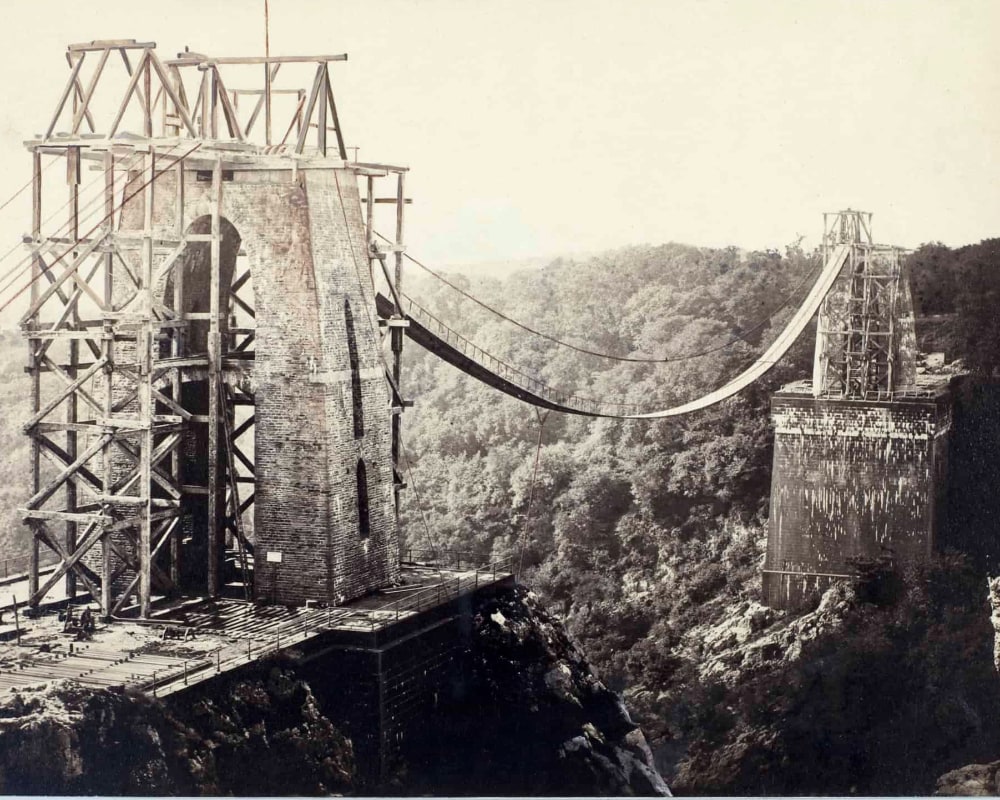
In 1885, 22-year-old Sarah Ann Henley jumped off the bridge, but her billowing Victorian skirts acted as a parachute, and she floated down and survived, landing in the River Avon’s mud banks below.
The Gateway of India
Today, the Indo-Saracenic Gateway of India is an 83-foot-high arch monument in Mumbai. It was built to commemorate English King George V and Queen Mary of Tek, Emperor and Empress of India. However, when the royals arrived in Bombay in 1911, architect George Wittet hadn’t even started building.

So, instead, King George and Queen Mary opened a cardboard model of the Gateway of India. Good job it didn’t rain! After a few cups of chai and much talking, construction finally began in 1915, and the non-cardboard gate was completed in 1924.
The Empire State Building
The Empire State Building overtook the Eiffel Tower, becoming the world’s tallest structure. Standing 1,454 ft (443.2m), construction on New York’s Art Deco skyscraper began in 1929. Despite the Wall Street Crash devastating the world economy that same year, the building cost a staggering $40,948,900. That’s $710,731,618 today!
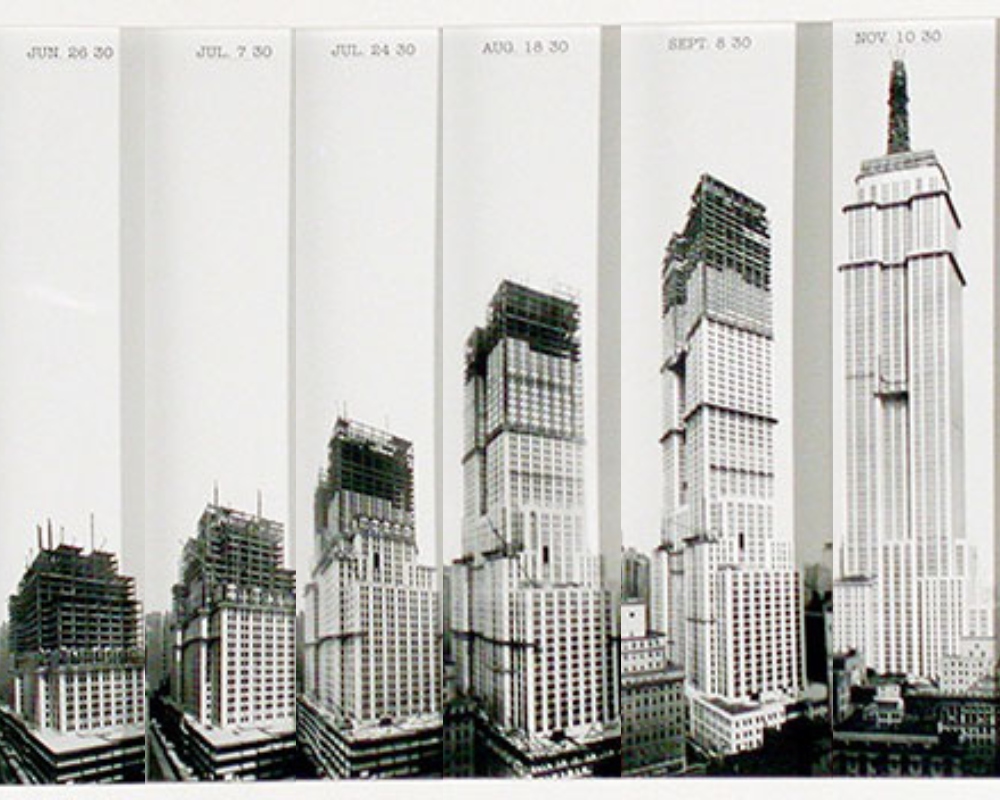
Lewis Hine, who took these photos, would climb and dangle from the unfinished structure. Lewis also took the famous shot of construction workers eating their lunch sitting on a beam high above The Big Apple before King King attacked.
The Golden Gate Bridge
San Francisco’s Golden Gate Bridge has been seen in dozens of movies. A giant octopus destroyed it in 1955’s It Came from Beneath the Sea. It’s been crushed by Godzilla and overrun by chimps, gorillas, orangutans, and James Bond. But, unfortunately, not in the same film; the movies were The Planet of the Apes and A View to a Kill.
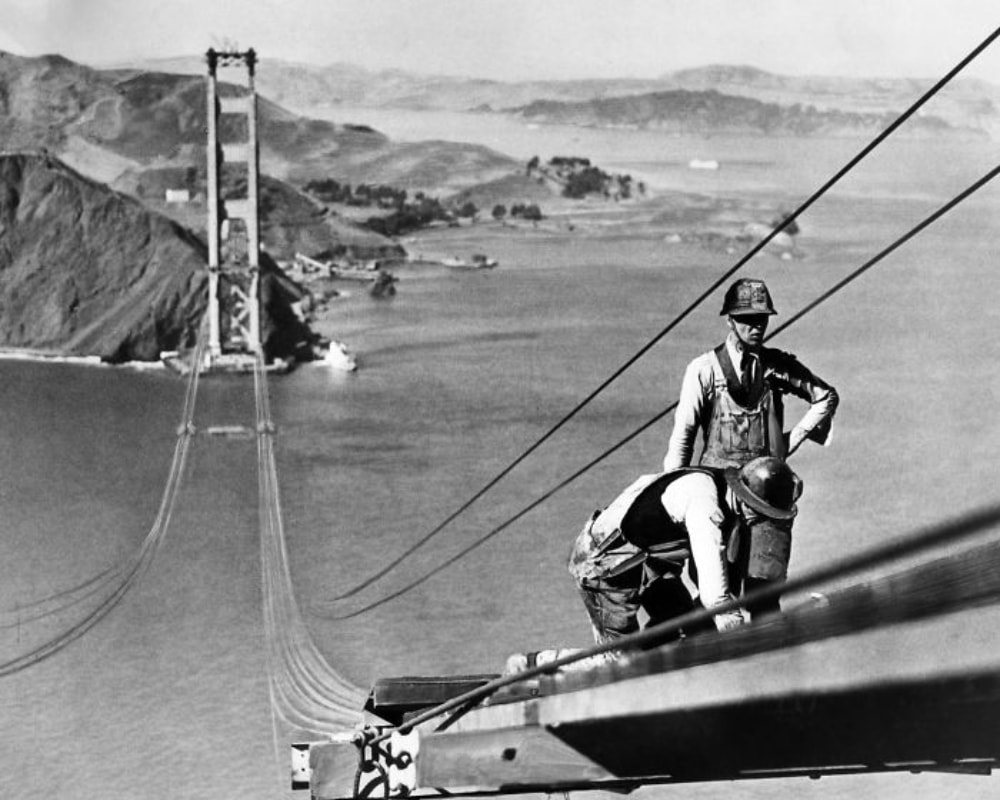
Work on the gorgeous world-famous landmark began in 1933, and she opened four years later. If you think the bridge is red, think again. It’s actually a shade of orange vermilion called international orange. You live and learn!
The Hoover Dam
When it was completed in 1936, the 726.4 feet tall, 1,244 feet wide Hoover Dam was the largest concrete structure in the world. Originally named Boulder Dam, it sits on the Colorado River about 30 miles southwest of Las Vegas.
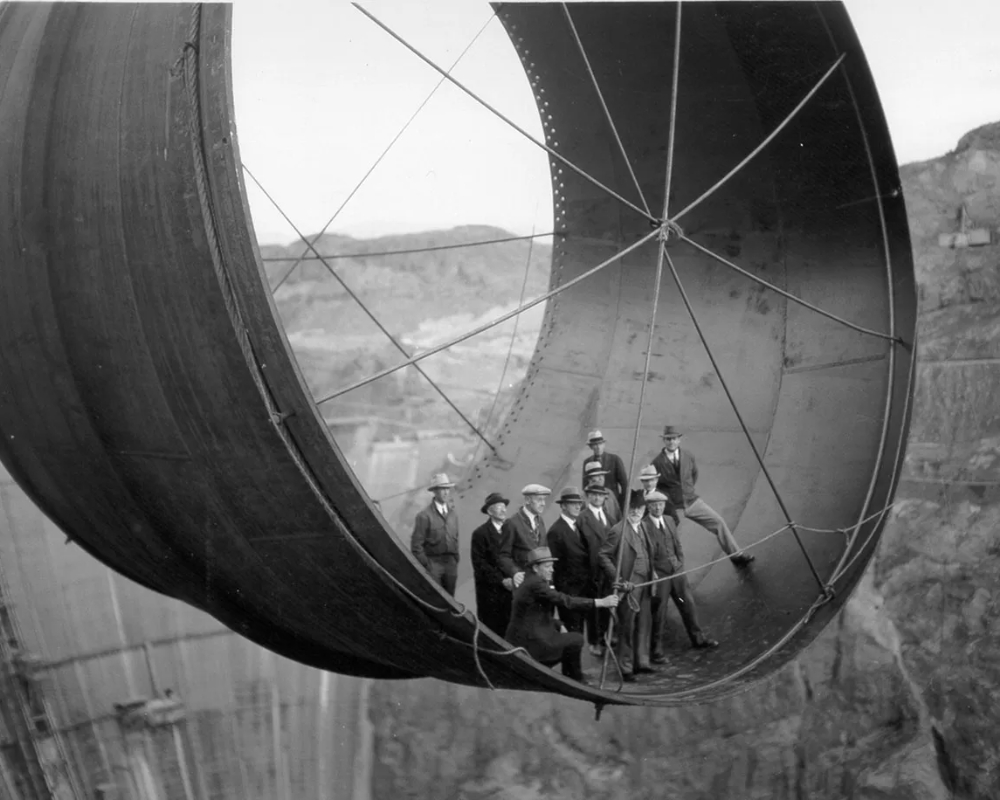
The project created the United State’s largest reservoir, Lake Mead, and harnesses gigawatts of hydroelectricity. The five-year project also created jobs for thousands of laborers during The Great Depression, but sadly, over 100 men lost their lives.
Neuschwanstein Castle
This German castle is the Neuschwanstein. Although it looks much older, it is a 19th-century palace in Bavaria among the foothills of the Alps in southern Germany, just north of Austria. Before Germany existed as a country, King Ludwig II of Bavaria wanted to escape bustling Munich, so construction began on his fairy tale retreat home in 1869.

Sadly, Ludwig II never got to see it finished as he passed away in 1886, the year this photo was snapped. This is where Walt Disney found his inspiration for many Disney princesses.
Disneyland
Here’s Walt Disney overseeing the early construction of Disneyland in 1954. The world’s most famous theme park opened in Anaheim, California, the following year. Tickets were so easy to counterfeit that 14,000 people bought forged tickets or climbed over the fence to make their way inside on opening day — Sunday, July 17th, 1955.
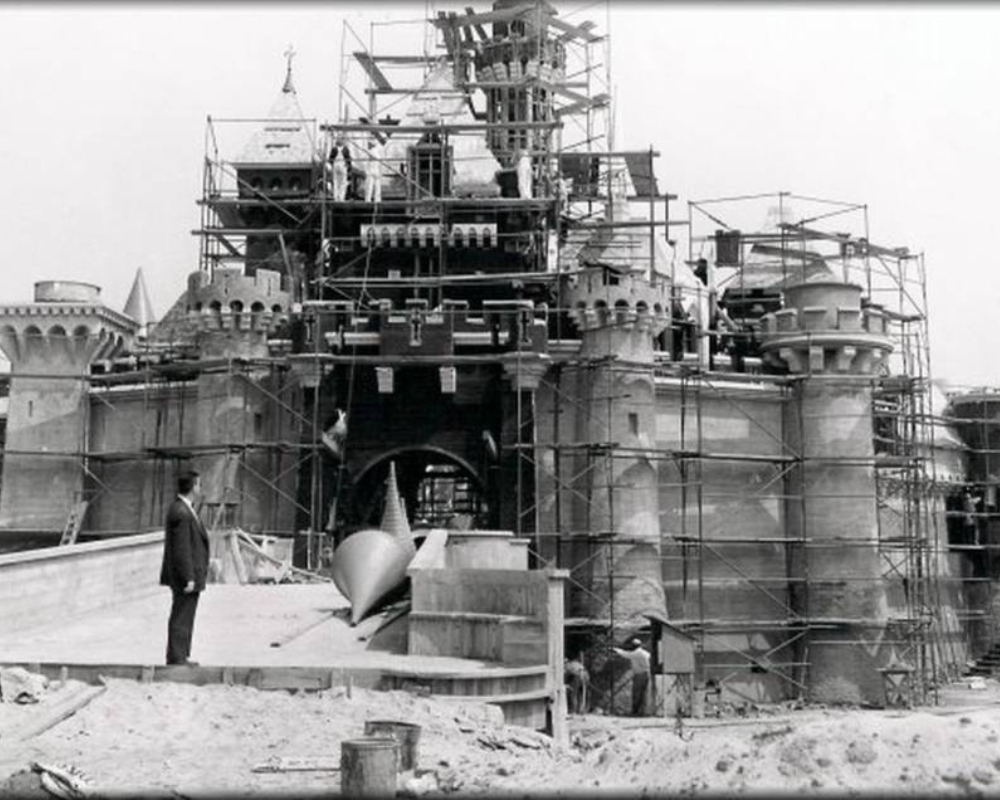
One man even charged $5 for people to climb his ladder to make their way onto the site. In 2022, Almost 17 million people visited Disneyland, but zero by ladder!
Sydney Opera House
Danish architect Jørn Utzon designed the Sydney Opera House after winning a competition and beating 233 other designs. Ten thousand workers began work in 1959 and, due to having to be completed in stages — three stages, podium, roof, and interior — and a series of setbacks, ended in 1973 when Queen Elizabeth II opened the iconic structure.

The shell-like building is an architectural masterpiece, and millions of tourists and opera fans have visited Australia’s most famous building. Sadly, Jørn Utzon wasn’t one of them. He never saw his design in the flesh.
Sydney Harbour Bridge
Long before the Opera House opened, Sydney Harbour Bridge joined the north and south sides of the city. It took over 2,000 people eight years to complete, and here’s Edward Seale’s impressive 1930 photograph. The bridge was opened in 1932 but not in the traditional way…

New South Wales’ Premier was beaten to the ribbon cutting ceremony by right-wing New Guard of Australia group leader Francis De Groot, who rode a horse across the bridge and slashed the ribbon with a sword!
The Capitol
Standing on Capitol Hill at the east end of Washington, DC’s National Mall, the neoclassical Capitol Building is one of the most famous landmarks in America. Some central sections were completed by 1800 but partly destroyed by the British in the 1814 Burning of Washington.

This superb photograph was snapped in 1857. The famous dome wasn’t completed until after the American Civil War in 1866. On January 6th, 2021, the Capitol was attacked by an angry mob planning to stop the peaceful transition of power.
The Panama Canal
The Panama Canal is one of humankind’s most impressive engineering feats. The 51-mile (82 km) artificial waterway connects the Atlantic Ocean with the Pacific Ocean and divides North America from South America. Construction officially began in 1904, and 75,000 workers were involved in cutting through the continental divide.
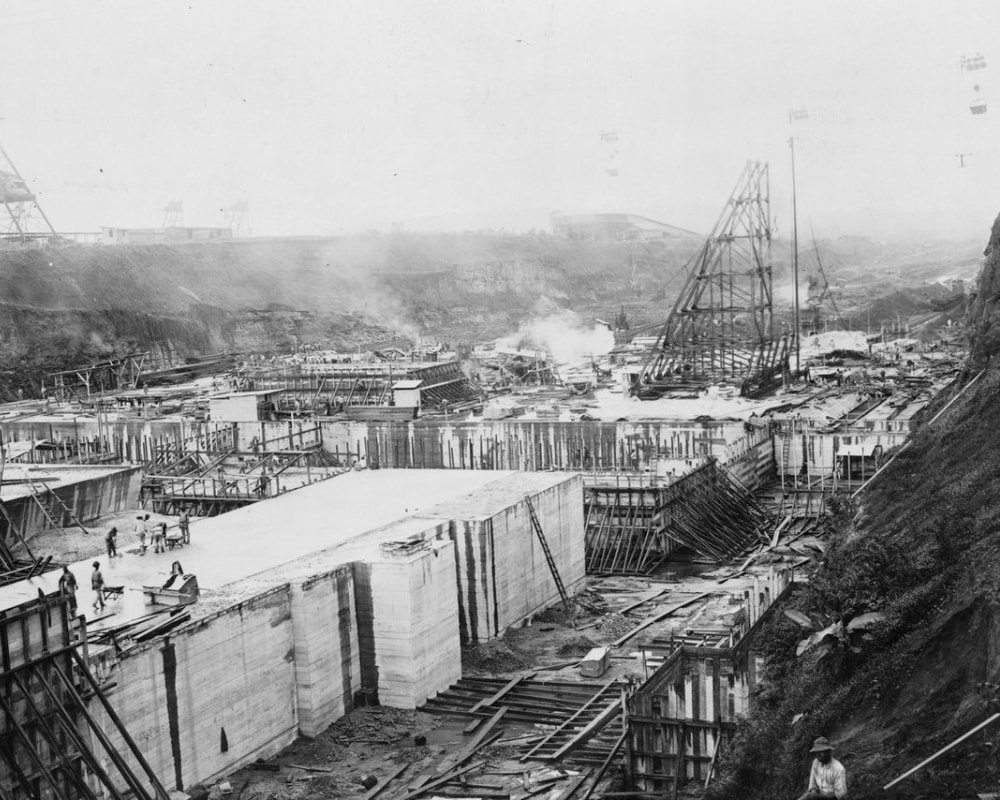
After ten back-breaking years moving 240 million cubic yards of earth, and at a cost of $336,650,000, the canal finally opened in 1914. Records state that a staggering 5,855 people lost their lives constructing the canal.
Sagrada Família
Dominating Barcelona’s skyline is the Basílica i Temple Expiatori de la Sagrada Família, aka the Sagrada Família. The beautiful basilica was the brainchild of architect Antoni Gaudí, and work began in 1882. The breathtaking cathedral combines Gothic and Art Nouveau styles.
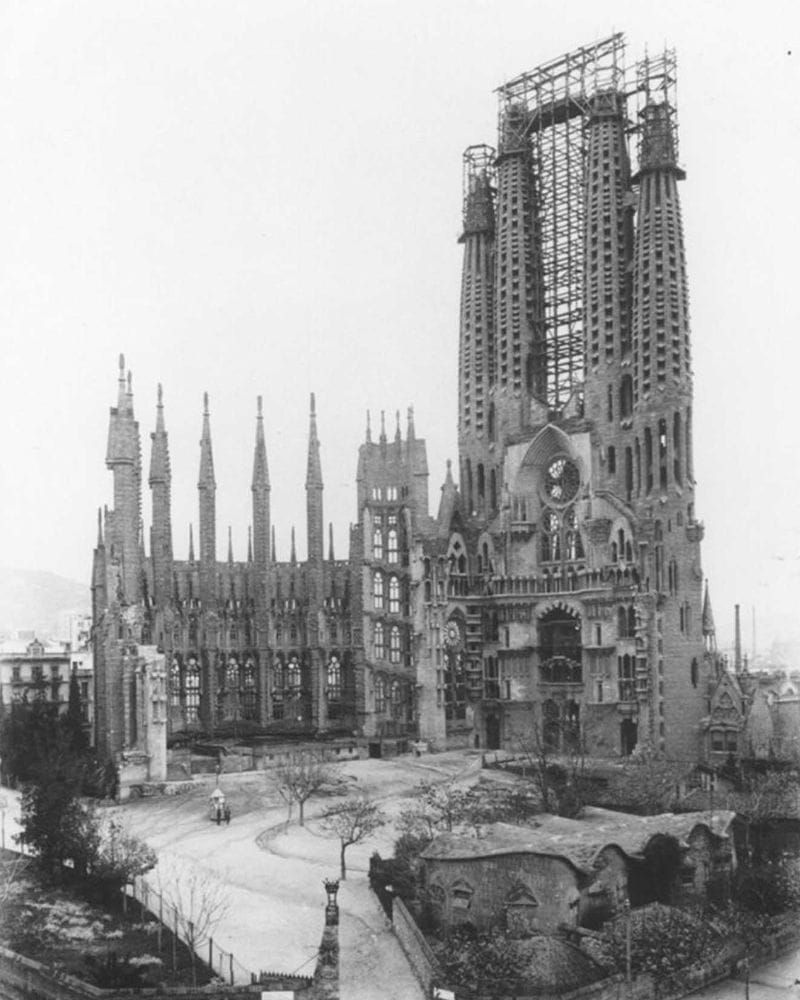
Gaudí devoted his life to the cathedral and was buried in its crypt in 1926. Here, it is under construction. When Gaudí passed away, less than a quarter of the project was complete, and his mega project remains unfinished!
The World Trade Center
Construction on the World Trade Center began in 1966, and the Twin Tower complex opened seven years later. Standing at 1,368 feet, one World Trade Center became the tallest building in the world.
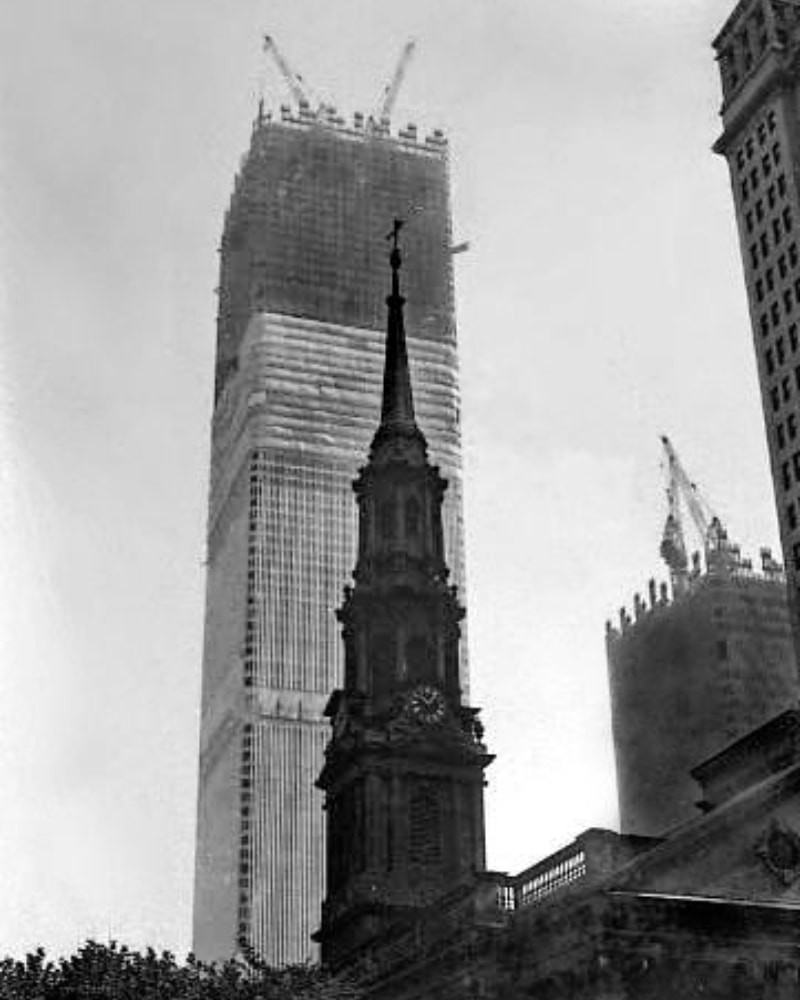
The two skyscrapers symbolized the United State’s economic power and dominated New York City’s skyline for 28 years. But then, on September 11th, 2001, two hijacked planes crashed into the World Trade Center. Both towers fell, claiming the lives of 3,000 people.
Tower Bridge
In the 1880s, London had a big problem. Well, two big problems if you include Jack the Ripper. The ever-expanding population meant people needed a new bridge to cross the River Thames near the Tower of London and have better access to the East End of London. However, ships with tall sails also needed to pass.
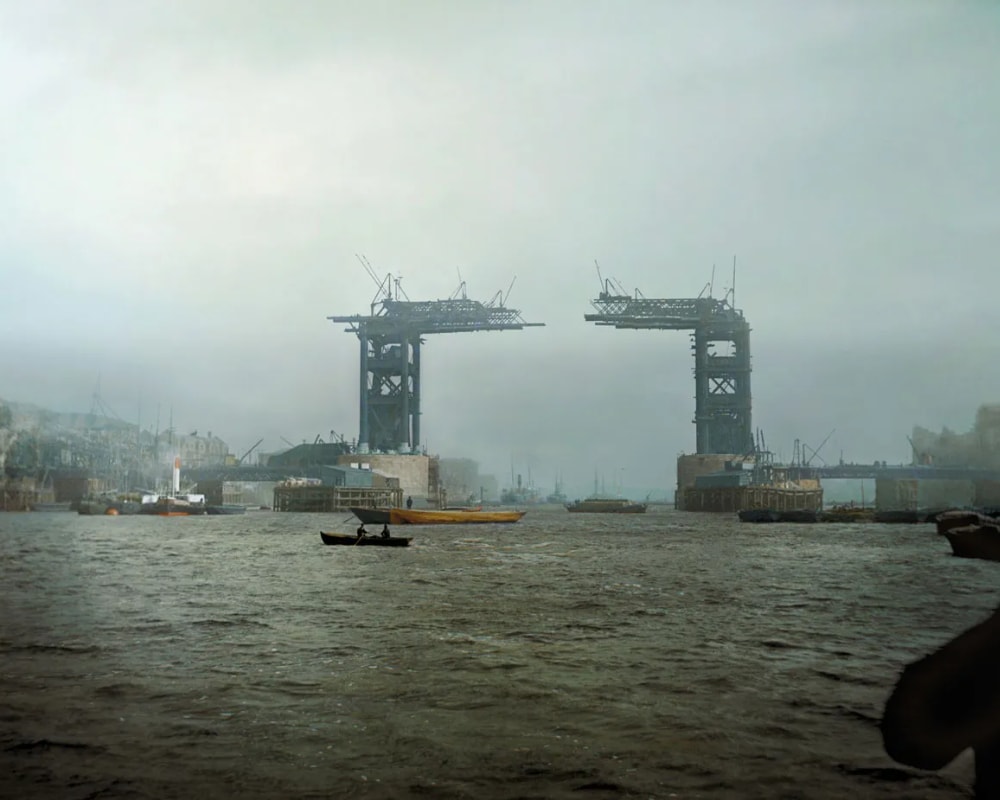
So designer Horace Jones and engineer John Wolfe Barry developed this ingenious, iconic bascule/suspension design that could raise to let ships pass underneath and sail further into London. Tower Bridge opened in 1894.
London Bridge
We’ve all heard the nursery rhyme “London Bridge is falling down…” but did you know a bridge has crossed the Thames in Southwark since Saxon times? Possibly even since Roman times. Until, that is 1968.
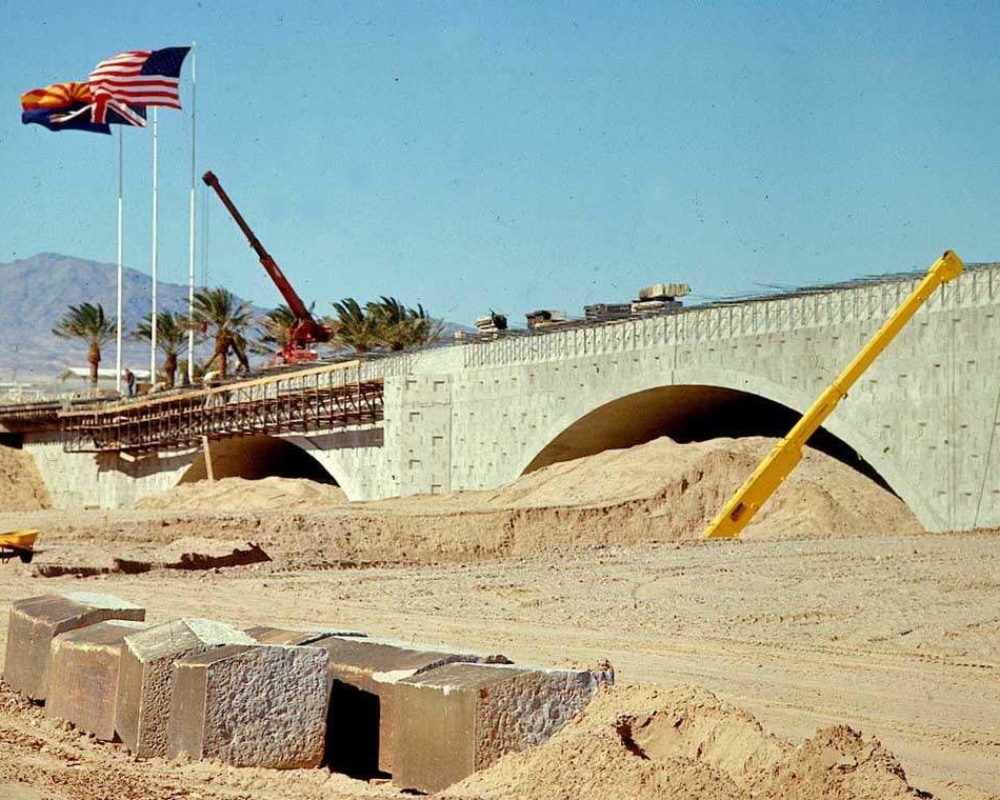
That year, American oil magnate Robert P. McCulloch bought London Bridge for $2,460,000. Legend says he believed he was buying Tower Bridge. He transported via the Panama Canal to Long Beach, California, and on to Arizona, where it was rebuilt brick by brick in Lake Havasu City. London opened a new bridge in 1973.
Ryugyong Hotel
The Ryugyong or Yu-Kyung Hotel is North Korea’s most famous and spookiest building. Construction began in 1987, and the building was intended to be the world’s largest hotel. But when the Soviet Union was dissolved, the country experienced an economic crisis in 1992, and work ground to a halt.
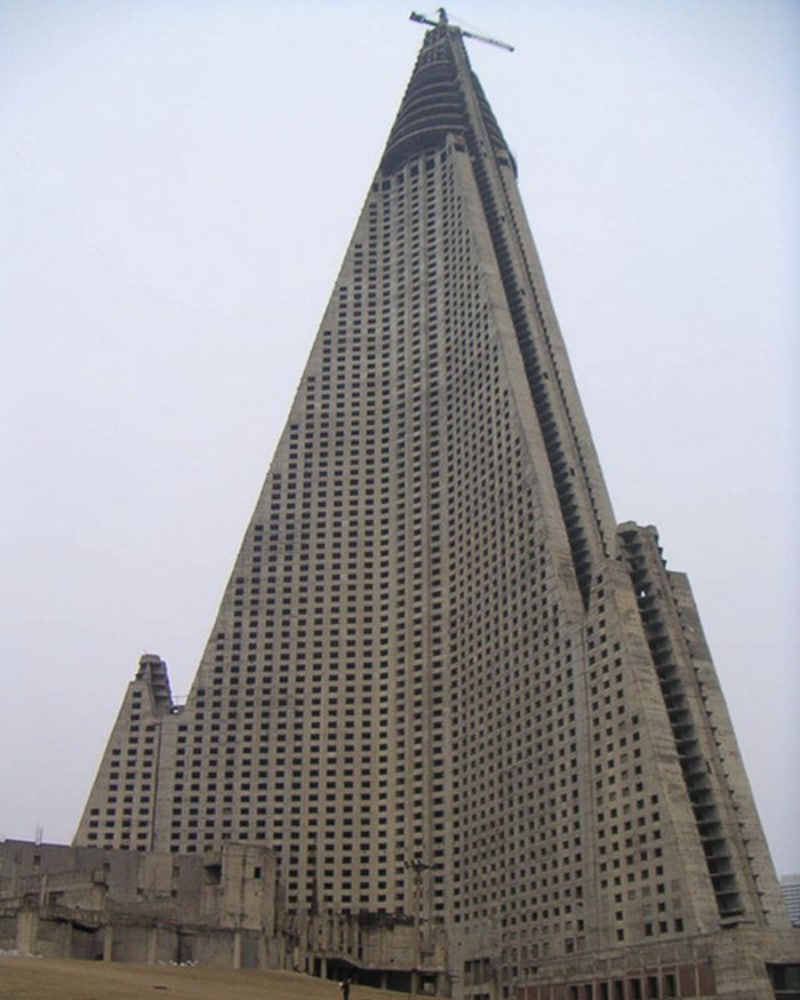
Despite repeated attempts, it remains unfinished. Today, the 1,082-foot, 105-story pyramid-shaped skyscraper dominates the Pyongyang skyline and is classified as the tallest unoccupied building in the world.
The Seattle Space Needle
Stopping in Washington State? Why not take a 41-second elevator to the top of Seattle’s most iconic landmark, the 605-foot (184 m) tall Space Needle? From the 360-degree observation deck, you can see all the way to Mount Rainier.

It was once the tallest structure west of the Mississippi River and can withstand 200 mph winds and earthquakes of up to 9.0 magnitude. Construction began in April 1961, and the iconic landmark was completed by December 1961. The moral of the story? Get Canadian construction workers!
The Gateway Arch
Looming 630 feet above St. Louis, Missouri — and situated on the banks of the Mississippi River — the Gateway Arch is the world’s tallest archway and the tallest man-made structure in the entire Western Hemisphere. The gleaming silvery arch is a monument to the westward expansion of the United States.

And after so many Scandinavians made their way across the Mid-West in horse-drawn wagons in the late 1800s, who better to design “The Gateway to the West” than Finnish-American architect Eero Saarinen?
The Shard
The Shard is a 95-story supertall skyscraper in the heart of London. Although Italian architect Renzo Piano imagined a romantic church-like spire like the ones he loved from 18th-century Venetian painter Canaletto’s cityscapes, the residential building seems to jut out of the River Thames like a giant shard of glass.

It features 11,000 separate panes of glass. Weighing in at an impressive 1,016 feet, it’s the United Kingdom’s and Western Europe’s tallest building. The UK’s tallest structure is the Emley Moor communication tower.
The Washington Monument
Standing at 554 feet tall, the marble, granite, and bluestone gneiss Washington Monument is the world’s tallest obelisk. Construction on the presidential memorial began in 1848, but work ground to halt when donations ran out in 1854, leaving the monument a feeling a little short and inferior at 152 feet.

However, after the Civil War ended, construction finally resumed in 1879, and the obelisk was completed in 1888. Peter Parker famously saved his classmates while trapped in the Washington Monument’s elevator in Spider-Man: Homecoming.
Sacré-Cœur Basilica
This photo from the 1880s shows construction on the bell tower of the Sacré-Cœur Basilica on the Montmartre Hill in Paris. Paul Abadie began work in 1875, but the French Architect didn’t live long enough to see his project in its full glory, as the basilica wasn’t completed until 1914.
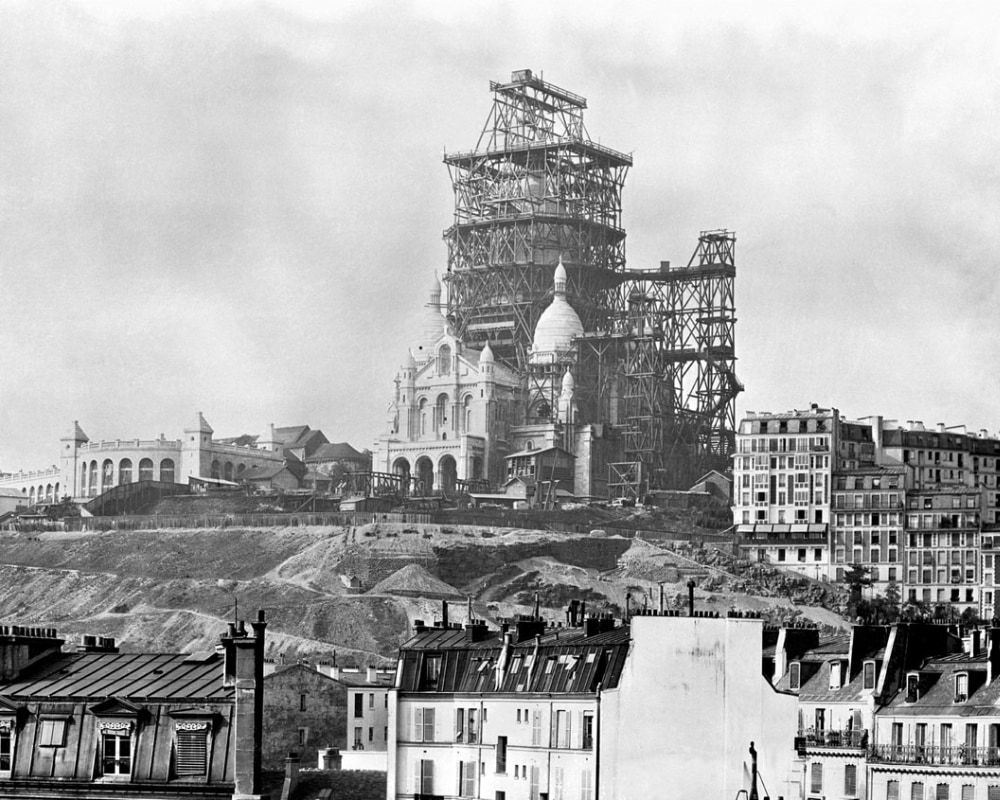
The stunning Neo-Byzantine-Romanesque cathedral overlooks the entire French capital from its dome high above the River Seine. It’s Paris’ second most popular tourist destination after the Eiffel Tower. Sacre Coeur means Sacred Heart, by the way.
NASA Vehicle Assembly Building
Located in Cape Canaveral, Florida, NASA’s Vehicle Assembly Building and Launch Control Center is the largest single-story building in the world, standing 526 feet or 160.3 meters. The reason it’s so big is because the National Aeronautics and Space Administration built spaceships there.

Work began in 1963, and the behemoth was completed three years later using 30,000 cubic yards of concrete and 4,225 steel rods. Three more years later, Apollo 11 had taken Neil Armstrong and Buzz Aldrin to the moon. Or did they?
Nelson’s Column
Proudly overlooking London’s Trafalgar Square and flanked by four huge brass lions, Nelson’s Column was built in recognition of Royal Navy Vice Admiral Horatio Nelson, who masterminded British maritime victories in the French Revolutionary and Napoleonic Wars. He lost his life in the Battle of Trafalgar, but not before claiming victory.

This photo was taken by pioneering early British photographer William Henry Fox-Talbot in 1844. Seemingly a familiar tale, construction stopped as funds ran out. The statue of the one-armed Lord Nelson was finally added in 1854.
Narendra Modi Stadium
With 2.5 billion fans, cricket is the second-most popular sport in the world, after soccer’s 3.5 billion fans. As such, this five-day game of baseball, where they stop for lunch and tea, needs enormous stadiums. Or, to use the correct term, since the word comes from Latin, stadia.

Constructed in 1983 and renovated in 2006, the Narendra Modi Stadium is a cricket stadium in Ahmedabad, Gujarat, India. The massive complex is the largest stadium in the world, with a seating capacity of 132,000 spectators.
Brooklyn Bridge
This hybrid cable-stayed/suspension bridge spans the East River between Manhattan and, you guessed it… Brooklyn. Work began on the 1.1-mile-long bridge in 1870. Thirteen years, 600 workers, and $15 million later, Brooklyn Bridge was opened to the public in 1883.

Now, 120,000 vehicles cross the bridge every day. If there are 2.08 people in each car, that makes a quarter of a million people. Where did we get the .08 from? Well, who knows what people carry in their lunch boxes!
Manhattan Bridge
Though it’s not as famous as the nearby Brooklyn Bridge, this 1,470 ft (448 m) long suspension bridge also spans The Big Apple’s East River. Designed by Leon Moisseiff, it became the prototype for many modern suspension bridges.

The towers were built first in 1901, and after 30,000 tons of steel and $22 million, it was opened to traffic eight years later. Around 70,000 vehicles use the Manhattan Bridge daily to cross between Lower Manhattan and Downtown Brooklyn, or vice versa, on their way home from work.
Luang Pu Thuat Statue
Buddhist monk Luang Pu Thuat lived in Siam (modern-day Thailand) from 1582 to 1628. Although some records state, he lived to be 100 years old. He’s one of the most revered monks after The Buddha and is said to have performed miracles.
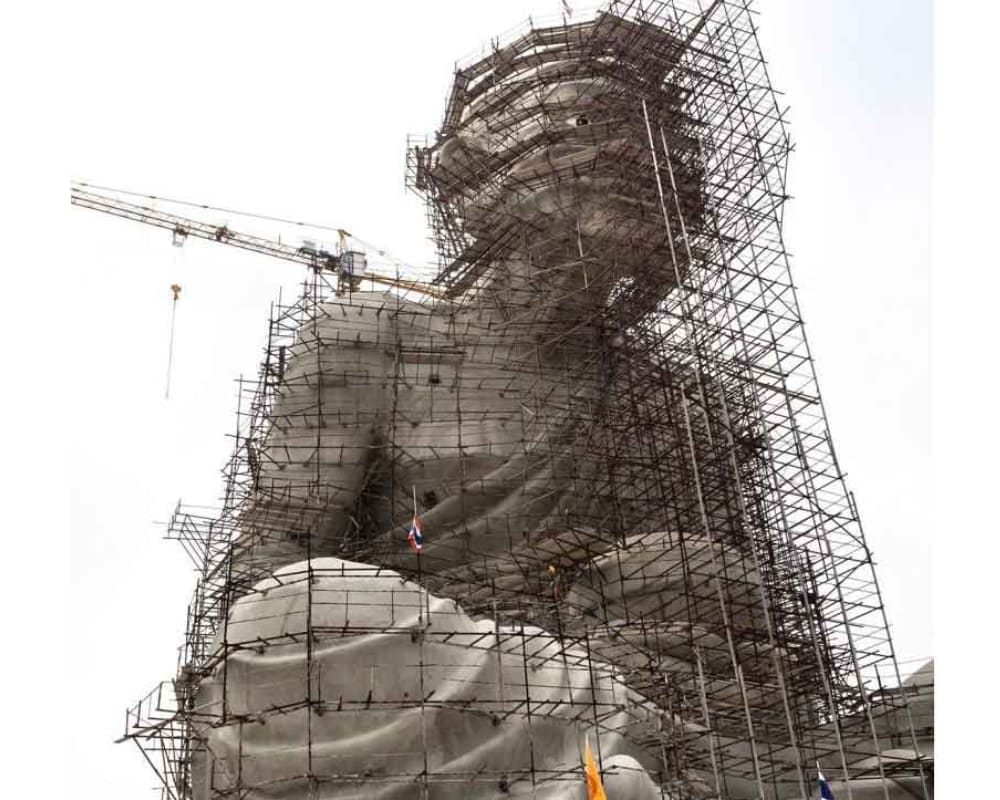
Statues of Luang Pu Thuat scatter the Thai countryside, but none are as impressive as this modern one in Surat Thani province, Southern Thailand. The sitting figure is 128 feet tall and measures 98 feet across its widest point, from knee to knee.
Cathedral of Brasília
This photo taken during construction doesn’t do the final product justice, but we’ll try our best to describe it. The stunning Cathedral of Brasília in Brazil’s purpose-built capital is a hyperboloid structure featuring 16 white columns made from concrete and weighing 90 tons each.
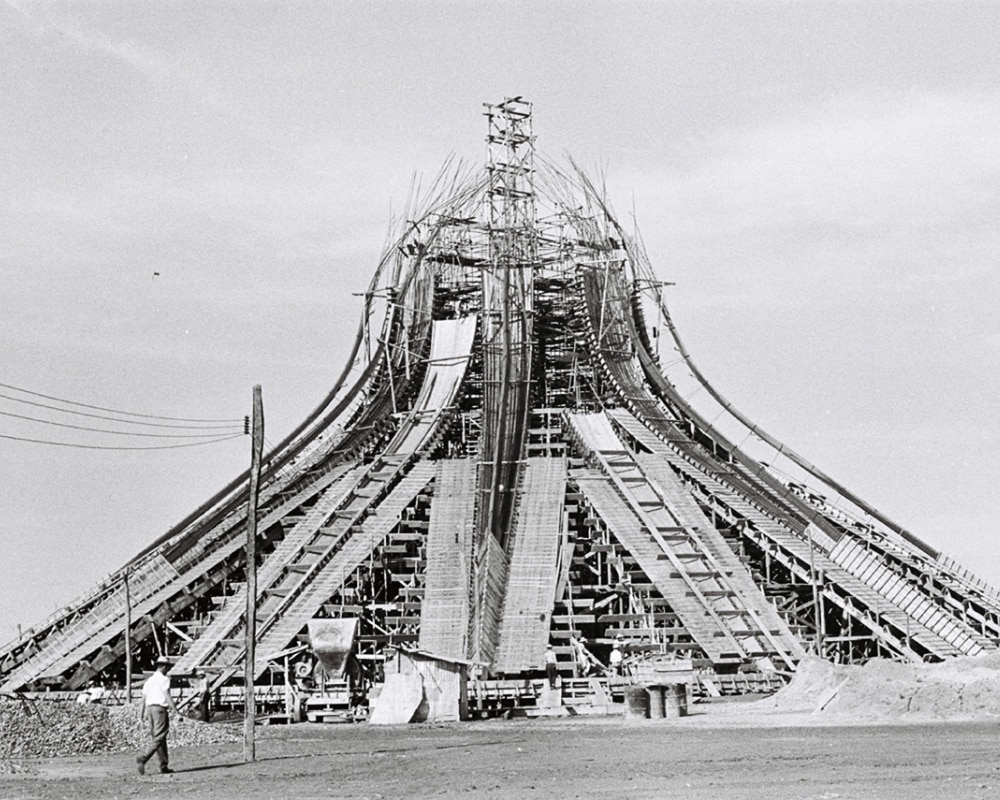
Each column bends inwards and then outwards, forming a roof over a beautiful glass building like a white teepee. On top sits a giant cross. If our description hasn’t done the trick, you must Google it! It’s gorgeous.
The Berlin Wall
After World War II, Germany was split into Soviet-ruled, communist East Germany, and the slightly more free West Germany. These radically different two countries were separated by an imagined “Iron Curtain” and in East Germany’s capital by The Berlin Wall. It went up in 1961, and for 30 years, East Germans tried to escape the communist state.

However, it finally came tumbling down thanks to the collapse of the Soviet Union and David Hasselhoff! The Baywatch actor and singer was there performing when the wall fell, and it takes some credit to this day!
The Louvre Pyramid
The Louvre Pyramid is a giant modern glass-and-metal structure that sits outside the central courtyard of the Louvre Palace in Paris. The Grand Louvre project was announced in 1981 and was completed in 1988. Designed by the Chinese-American architect I. M. Pei, the pyramid now serves as the main entrance to the Louvre Museum.

This photo shows the wireframe structure in 1985. A long-standing rumor claims that the structure contains 666 panes of glass––to represent the number of the beast, but it actually has 673 panes. Silly conspiracy theorists!
One Times Square
You’ll be glad to hear that One Times Square isn’t a math puzzle for you to solve. It’s the famous address in Times Square and the former headquarters of The New York Times newspaper. Nestled on 42nd Street and Broadway, construction on the super thin Neo-Gothic style structure began in 1903 and was completed within a year.
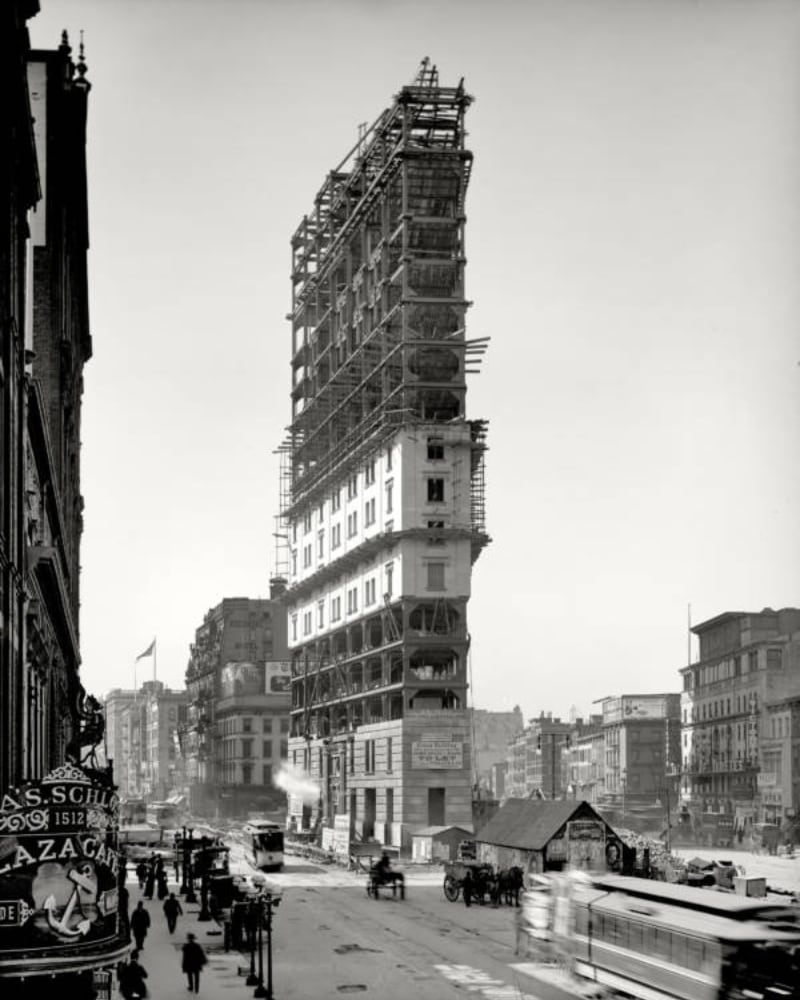
Nowadays, the building is perhaps most famous for housing giant electronic billboards. However, did you know that the first of these was installed as recently as 1996?
The Statue of Liberty
While Frédéric Auguste Bartholdi created The Statue of Liberty, Gustave Eiffel was also involved. She was a gift from the French people to the people of the United States and a token of their friendship and bond forged during the American Revolution.

Lady Liberty was assembled and disassembled on French soil before crossing the Atlantic to New York. There, she underwent a final reassembly before her grand unveiling in October 1886. She was initially copper in color but went green due to oxidization.
Indonesia National Monument
Indonesia’s National Monument is another obelisk built to commemorate the struggle for independence. The Monumen Nasional in the Bahasa language––often abbreviated to Monas––stands in Merdeka Square in the nation’s capital, Jakarta.

Construction began in 1961 and finished in three separate stages over 14 years. The site was finally opened to the public in 1975. Looking like a giant candle, it is topped by a flame covered with gold foil and sits on a tray, presumably to collect all that dripping candle wax.
The Channel Tunnel
It’s not much to look at, but the tunnel beneath the English Channel is another of humankind’s most remarkable engineering feats. Construction on the world’s longest undersea tunnel took six years, with 11 tunnel boring machines and 15,000 workers cutting through the bedrock. The construction took $5.72 billion ($15 billion today).

The tunnel is 31.35 miles long and began operating in 1994 after it was formally opened by Queen Elizabeth II and alongside a certain former French president. Although he’d have called the English Channel La Manche.
The London Underground
These fine English chaps are excavating the London Underground in 1903. Nowadays, many cities have a metro system, but London was the first. In 1863, the underground opened its doors to the first brave metro passengers.
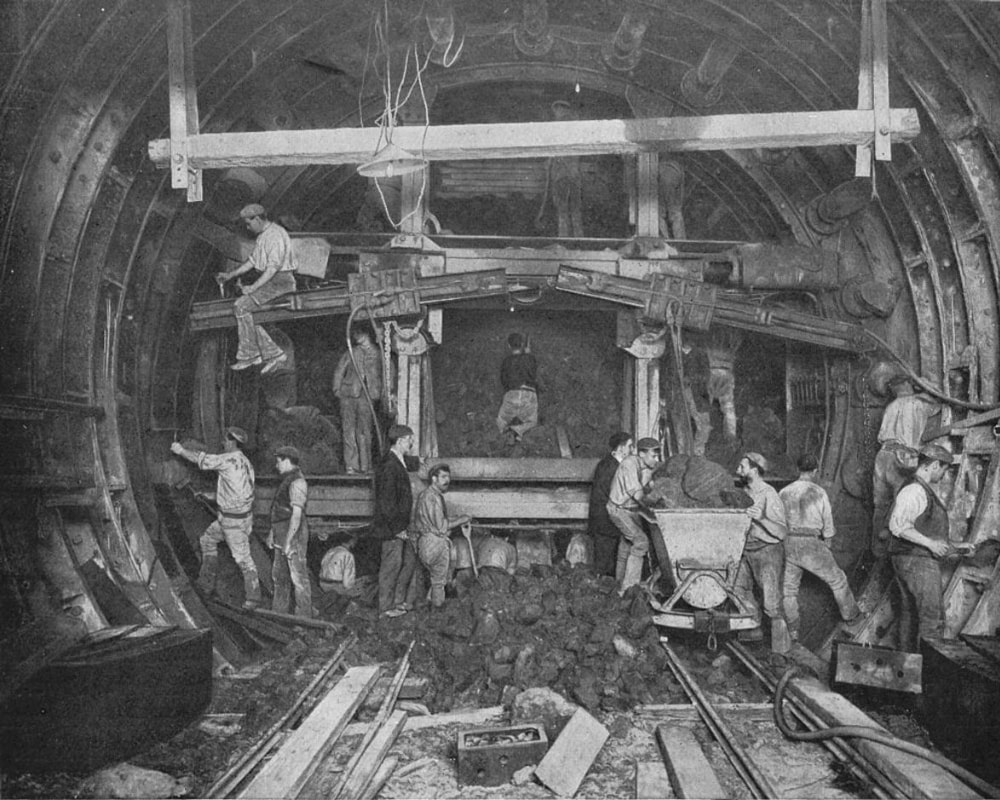
We say brave as many Londoners were too scared to travel as they believed you couldn’t breathe underground. Now, over a billion passengers use the London metro every year! But, if you’ve ever jostled for standing space with your face in someone’s armpit on the cramped Northern Line on a Friday evening, you’ll know they were right!
Michigan Stadium
Michigan Stadium is the home to the University of Michigan in Ann Arbor, Michigan’s football team. The Wolverines are lucky enough to play in the largest stadium in the USA and the Western Hemisphere. However, “The Big House” is also the third largest stadium in the world.
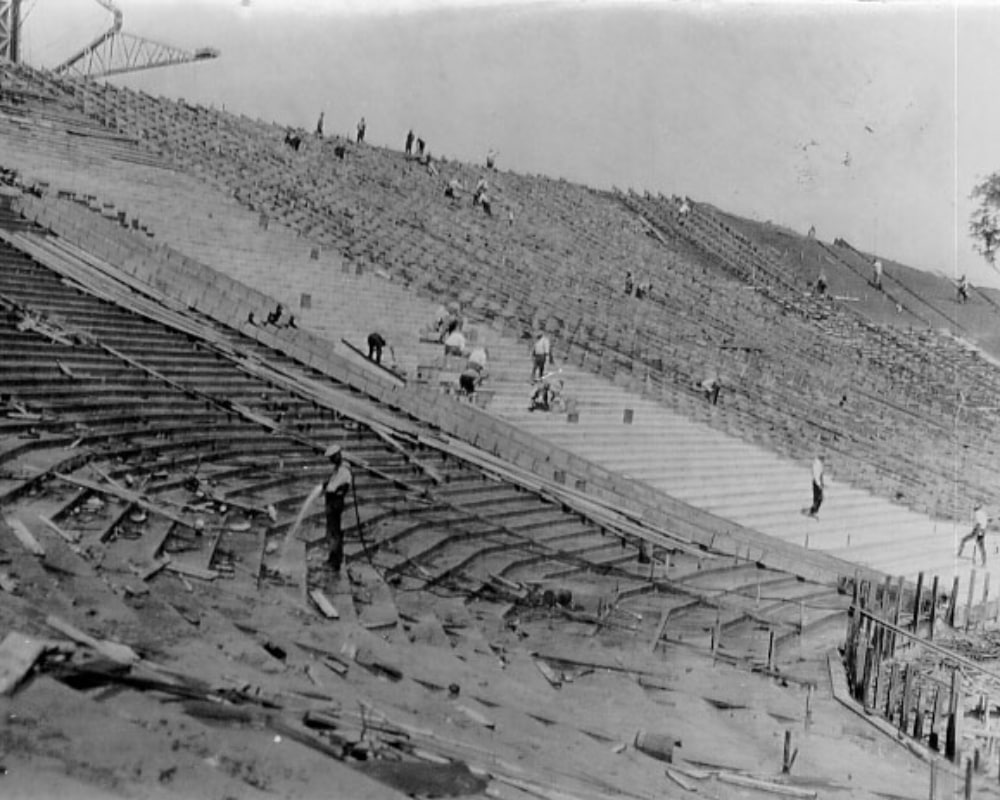
It opened in 1927 to house 72,000 fans, costing $950,000 (equivalent to $12 million today). While the capacity is officially 107,601, Michigan Stadium has hosted crowds of over 115,000 screaming, freezing football fans.
Stonehenge
Stonehenge is a Neolithic structure in Wiltshire, England. No one knows who built it or what they were doing, but it’s believed ancient tribes somehow transported huge megaliths 150 miles (240 km) from the Preseli Hills in Wales to build an astronomical site between 3000 and 2000 BC.
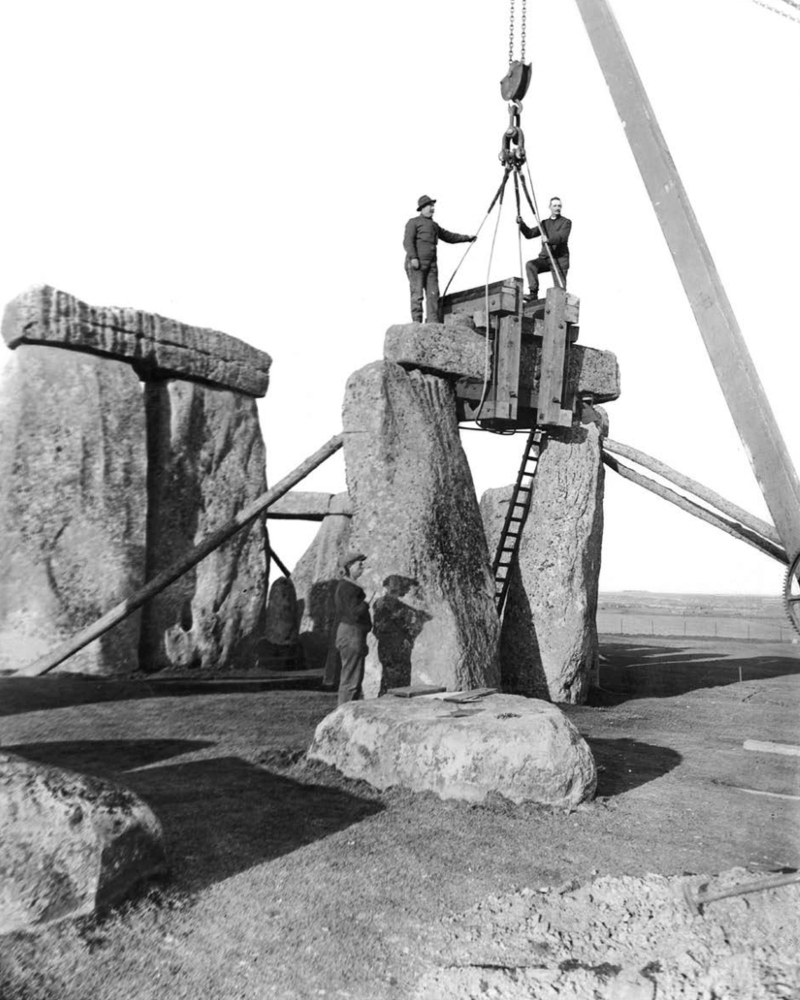
As such, we don’t have any photographs, but we do have some snaps of restoration work from 1919. Lieutenant-Colonel William Hawley of The Society of Antiquaries carried out excavations to reset some of the fallen, reset leaning stones, and set some in concrete.
Many sites, like Stonehenge and the Pyramids, were constructed before photography existed. However, we’ve collated some of our favorite modern buildings, bridges, monuments, memorials, stadiums, and structures photographed during construction before tourists flocked to them. So, travel with us back in time as we bring you a plethora of phenomenal photos and fascinating fun facts about these world-famous landmarks before they were landmarks.